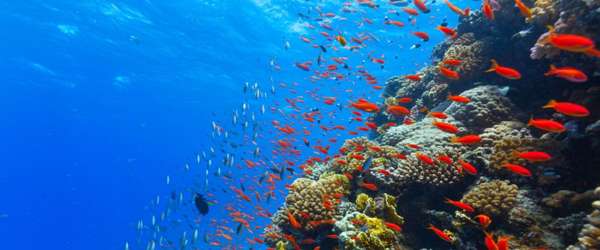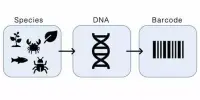In September of 2017, marine biologists were conducting an experiment off the Caribbean coast of Panama in Bocas del Toro. They snorkeled down after sitting on a calm, warm open ocean to discover a strange layer of murky, foul-smelling water about 10 feet below the surface, teeming with brittle stars and sea urchins, which are usually hidden on the tops of coral. This observation prompted a collaborative study to investigate what causes this foggy water layer and the impact it has on life at the seafloor.
This unusual observation prompted a collaborative study, which is described in a new paper published today in Nature Communications, to investigate what causes this foggy water layer and the impact it has on life at the seafloor.
“We’re seeing hypoxic ocean waters, which means there’s little to no oxygen in that area. All of the macroorganisms are attempting to escape the deoxygenated water, and those that are unable to do so essentially suffocate. I’ve never seen anything like it on a coral reef before “Johnson stated.
After sitting on a quiet, warm open ocean, researchers snorkeled down to find a peculiar layer of murky, foul-smelling water about 10 feet below the surface, with brittle stars and sea urchins, which are usually in hiding, perching on the tops of coral.
“The water column is stratified due to a combination of stagnant water caused by low wind activity, warm water temperatures, and nutrient pollution from nearby plantations. As a result, we see the formation of hypoxic conditions, which begin to spread and encroach on nearby shallow habitats”, Johnson elaborated.
Researchers believe that the loss of oxygen in the global ocean is accelerating as a result of climate change and excess nutrients, but it is unclear how sudden deoxygenation events affect tropical marine ecosystems. Previous research has shown that rising temperatures can cause physical changes in coral, such as bleaching, which occurs when corals become stressed and expel algae that live within their tissues. If the conditions do not improve, the bleached corals will perish. However, in the tropics, real-time changes caused by decreasing oxygen levels have rarely been observed.
Locally, hypoxic events may be more dangerous to coral reefs than warming events that cause mass bleaching. These sudden events have an impact on all oxygen-requiring marine life and can quickly kill reef ecosystems.

Researchers reported coral bleaching and mass mortality as a result of this occurrence, resulting in a 50% loss of live coral that did not show signs of recovery until a year after the event, as well as a drastic shift in the seafloor community. The shallowest measurement with hypoxic waters was approximately 9 feet deep and approximately 30 feet from the Bocas del Toro shore.
What about the 50% of coral that did survive? Johnson and her colleagues discovered that the coral community they observed in Bocas del Toro is dynamic, with some corals capable of withstanding these conditions. This discovery paves the way for future research to determine which coral genotypes or species have adapted to rapidly changing environments, as well as the characteristics that enable them to thrive.
The microorganisms living in the reefs were also found to be restored to a normal state within a month, as opposed to the macroorganisms, such as brittle stars, which died in these conditions. They were able to conclude that these microbes did not necessarily adjust to their environment, but rather were “waiting” for their time to shine in these low-oxygen conditions by collecting seawater samples and analyzing microbial DNA.
“The takeaway message here is that you have a community of microbes; it has a specific composition and plugs along, then all of the oxygen is suddenly removed and you get a replacement of community members. They thrive for a while, but eventually, the hypoxia goes away, the oxygen returns, and the community quickly returns to what it was before due to the change in resources. This is in stark contrast to what is observed with macroorganisms “Jarrod Scott, co-author of the paper and postdoctoral fellow at the Smithsonian Tropical Research Institute in the Republic of Panama, agreed.
Scott and Johnson both agree that human activity can contribute to nutrient pollution and warming waters, both of which can result in hypoxic ocean conditions. Coastal land development and farming can be better managed and improved, reducing the likelihood of deoxygenation events occurring.
The research sheds light on what happens to microbe communities on a coral reef during an acute deoxygenation event. Reef microbes respond quickly to changes in physicochemical conditions, providing reliable indicators of natural physical and biological processes.
The team’s discovery of a shift from a hypoxic microbial community to a normal condition community after the event suggests that the recovery route of reef microbes is independent and decoupled from the benthic macroorganisms. This could help restart key microbial processes that influence the recovery of other aspects of the reef community.
















